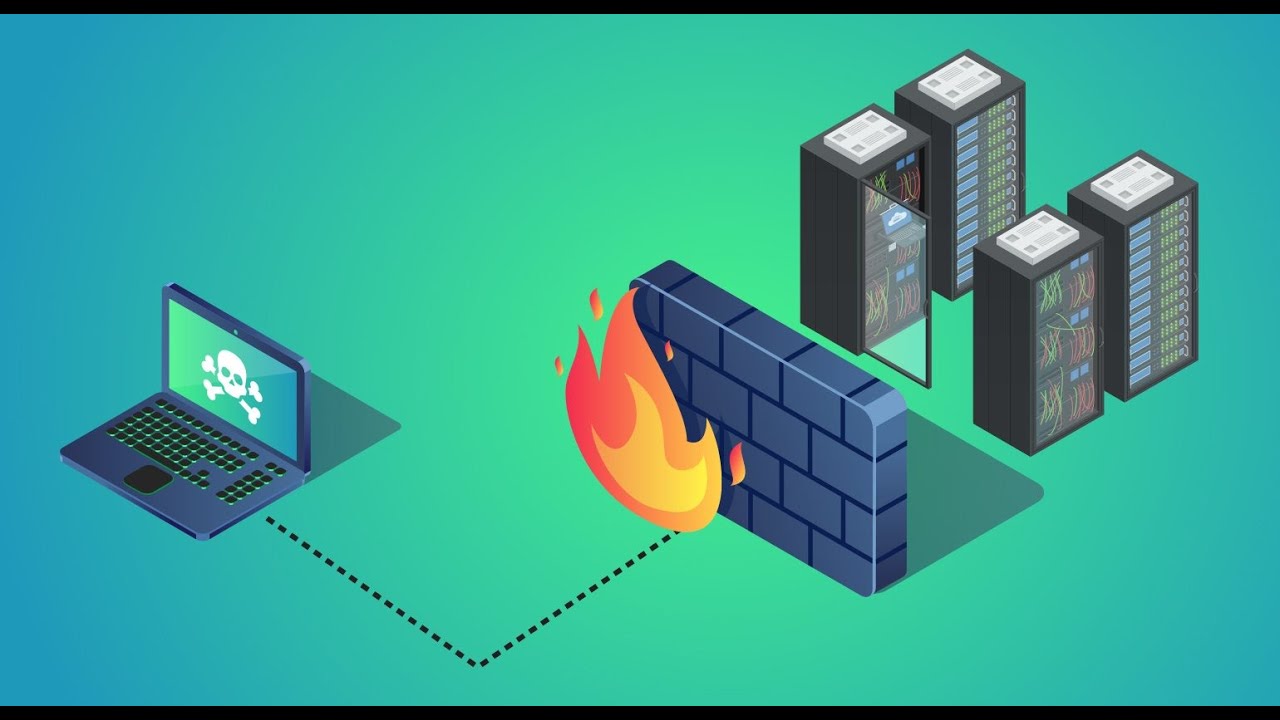In today’s interconnected world, where our lives are increasingly intertwined with technology, the need for robust security measures has never been more critical. One of the fundamental components of cybersecurity is firewall protection. This article explores what firewalls are, their importance, how they work, and the best practices for implementing them in both personal and business contexts.
What is a Firewall?
A firewall is a network security device or software designed to monitor and control incoming and outgoing network traffic based on predetermined security rules. Acting as a barrier between a trusted internal network and untrusted external networks, firewalls are crucial for protecting systems from cyber threats.
Types of Firewalls
There are several types of firewalls, each serving a specific purpose:
- Packet-Filtering Firewalls: These are the most basic type of firewalls. They inspect packets of data and determine whether to allow or block them based on predefined rules. Packet-filtering firewalls are fast and efficient but do not inspect the data contained within the packets.
- Stateful Inspection Firewalls: These firewalls keep track of active connections and make decisions based on the state of the connection. They offer more advanced security than packet-filtering firewalls and can make more informed decisions about allowing or blocking traffic.
- Proxy Firewalls: Acting as intermediaries between users and the internet, proxy firewalls can provide additional security by hiding internal network addresses. They can also cache data to improve performance and filter content.
- Next-Generation Firewalls (NGFW): These advanced firewalls combine traditional firewall capabilities with additional features like intrusion detection systems (IDS), deep packet inspection, and application awareness. NGFWs are essential for protecting against sophisticated threats.
- Software Firewalls: Installed on individual devices, software firewalls control traffic to and from that specific device. They are often used in personal computers and are essential for protecting individual systems.
- Hardware Firewalls: These are physical devices that protect the entire network. They are typically used in business environments and can handle higher traffic loads.
The Importance of Firewall Protection
1. Threat Prevention
Firewalls play a crucial role in preventing unauthorized access to a network. By blocking malicious traffic and potential threats, they help organizations and individuals maintain a secure digital environment. A robust firewall can prevent attacks such as:
- Malware Infections: Firewalls can block known malware signatures and prevent harmful software from infiltrating systems.
- Phishing Attacks: By filtering out suspicious emails and websites, firewalls can reduce the risk of falling victim to phishing schemes.
- DDoS Attacks: Firewalls can help mitigate Distributed Denial of Service (DDoS) attacks by filtering out excessive traffic that aims to overwhelm network resources.
2. Network Segmentation
Firewalls enable network segmentation, allowing organizations to divide their networks into smaller, more manageable sections. This segmentation enhances security by limiting access to sensitive data and applications. For instance, an organization can separate its guest network from its internal network, reducing the risk of unauthorized access to critical resources.
3. Regulatory Compliance
Many industries are subject to strict regulations regarding data protection and cybersecurity. Implementing effective firewall protection is often a requirement for compliance with regulations such as:
- HIPAA: The Health Insurance Portability and Accountability Act mandates the protection of sensitive patient data.
- PCI DSS: The Payment Card Industry Data Security Standard requires organizations that handle credit card information to implement specific security measures, including firewalls.
- GDPR: The General Data Protection Regulation emphasizes the protection of personal data and requires organizations to implement appropriate security measures.
4. Monitoring and Logging
Firewalls provide valuable monitoring and logging capabilities. They can track network traffic patterns, detect anomalies, and generate reports that help organizations identify potential threats. This information is crucial for incident response and forensic analysis in the event of a security breach.
How Firewalls Work
Firewalls operate on the principle of allowing or blocking traffic based on predefined rules. The process involves several steps:
1. Packet Inspection
When data packets attempt to enter or exit a network, the firewall inspects the packet headers, looking at information such as the source and destination IP addresses, port numbers, and protocols. Based on this information, the firewall determines whether to allow or block the traffic.
2. Rule Evaluation
Firewalls operate based on a set of rules defined by network administrators. These rules can be based on various criteria, such as:
- Source and destination IP addresses
- Port numbers
- Protocols (TCP, UDP, ICMP, etc.)
- Application types
If a packet matches a rule that permits traffic, it is allowed through. If it matches a rule that blocks traffic, it is denied access.
3. Stateful Inspection
Stateful firewalls track the state of active connections. Instead of evaluating each packet independently, they consider the context of the traffic flow. This allows for more intelligent decision-making, as the firewall can distinguish between legitimate traffic and potentially harmful data.
4. Logging and Reporting
As firewalls process traffic, they generate logs that provide insights into network activity. Administrators can review these logs to identify unusual patterns, track potential security incidents, and fine-tune firewall rules.
Best Practices for Implementing Firewall Protection
To maximize the effectiveness of firewall protection, organizations and individuals should follow best practices:
1. Define a Clear Policy
Establish a clear firewall policy that outlines the acceptable use of network resources. This policy should specify which services are allowed and which should be restricted. Regularly review and update the policy to adapt to changing security needs.
2. Use a Multi-Layered Security Approach
While firewalls are essential, they should not be the only line of defense. Implement a multi-layered security strategy that includes antivirus software, intrusion detection systems, and regular software updates to ensure comprehensive protection.
3. Regularly Update Firewall Rules
Cyber threats are constantly evolving, so it’s essential to review and update firewall rules regularly. This ensures that the firewall can effectively respond to new threats and vulnerabilities.
4. Monitor Traffic and Logs
Continuously monitor network traffic and analyze firewall logs for signs of suspicious activity. Implement alert systems that notify administrators of potential threats in real-time, enabling a swift response.
5. Conduct Regular Security Audits
Perform regular security audits to assess the effectiveness of your firewall and overall network security posture. Identify vulnerabilities and areas for improvement, and take corrective action as necessary.
6. Educate Employees
Educate employees about the importance of cybersecurity and the role of firewalls in protecting the organization. Training sessions can help employees recognize potential threats, such as phishing attacks, and encourage them to report suspicious activity.
7. Implement VPNs for Remote Access
For organizations with remote employees, implementing a Virtual Private Network (VPN) can enhance security. VPNs create secure tunnels for data transmission, ensuring that sensitive information remains protected when accessed from outside the corporate network.
8. Regularly Back Up Data
Regular data backups are crucial for disaster recovery. In the event of a security breach or data loss, having up-to-date backups ensures that critical information can be restored quickly.
Firewall Protection for Home Users
While most discussions about firewall protection focus on businesses, individual users also need to implement effective firewall measures. Here are some tips for home users:
1. Use Built-in Firewall Features
Most operating systems come with built-in firewall features. Ensure that these features are enabled and properly configured to provide basic protection against unauthorized access.
2. Consider a Third-Party Firewall
In addition to built-in firewalls, consider using third-party software firewalls for added security. These solutions often provide more advanced features, such as application control and enhanced logging.
3. Stay Informed About Threats
Stay informed about the latest cybersecurity threats and trends. Regularly check for software updates and security patches to protect against vulnerabilities.
4. Secure Your Home Network
Change the default login credentials for your router and ensure that your Wi-Fi network is secured with a strong password. Enable WPA3 encryption if available, and consider hiding your network SSID to reduce visibility.
5. Educate Family Members
Educate family members about the importance of cybersecurity. Encourage them to practice safe browsing habits and report any suspicious online activity.
Conclusion
In an era where cyber threats are prevalent, firewall protection is an essential component of a robust security strategy. Whether you are an individual user or a business owner, understanding how firewalls work and implementing best practices can help safeguard your digital assets.
For more information and resources on enhancing your cybersecurity, visit Emits Group.
By investing time and resources in firewall protection, you can significantly reduce your risk of falling victim to cyberattacks and enjoy a safer online experience. As technology continues to evolve, staying informed and proactive in your cybersecurity measures will be vital for protecting your information and maintaining your privacy in the digital age.




